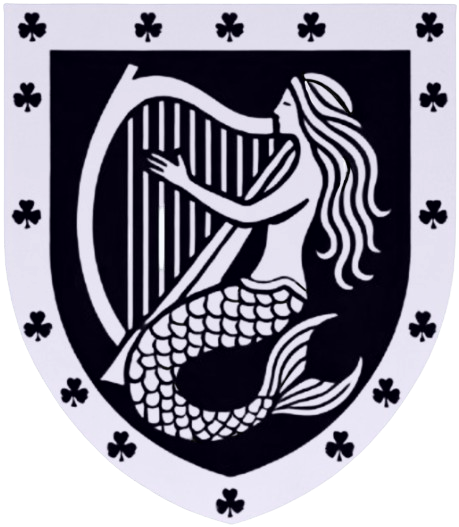About
Welcome to the Court of Lord Kinfauns, heir and deputy Antoin, Baron Bailie of Kinfauns Yr & Tanist Clan Commane, serves as regent and stewards House Ó Comáin in the same courtly manner as his Irish Gaelic ancestors.
In the Gaelic nobility of Ireland, Lord Kinfauns is Chief of Clan Ó Comáin and Taoiseach successor to the rí kings of Déisi Munster and the historic Chiefdom of Tulach Commáin, whose ancestral capital is the ringfort of Cahercommane in what is now County Clare. The family seat is Newhall Estate, a place of spiritual and historical significance. In 2025, the antiquity and lineage of Clan Commane were formally recognised by Clans of Ireland, under the patronage of the President of Ireland.
Through ventures in finance, heritage, and philanthropy, the Court remains dedicated to honouring its past while forging a meaningful role in the present.
This includes: Lord Kinfauns Foundation, Ineffable Hedge Fund, patronages, ventures, and organisations which receive support.
The Title Lord Kinfauns
This baronial lordship historically held the right to a seat in the pre-Union Scottish Parliament, as part of the ancient Three Estates—among the nobility of the Second Estate. It was long held as a subsidiary title by the Earls of Moray, one of Scotland’s original seven earldoms, known in the 10th century as mormaers (Gaelic for earl).
Later, the title devolved upon the Commane family, in accordance with the provisions for succession outlined in the original charter — with commitments to heritage and conservation at Newhall Estate, County Clare. The present Lord Kinfauns is custodian of Killone Abbey and the Holy Well of St John the Baptist, sacred Catholic sites within the estate grounds.
Designed domino Kynfawnis ‘Lord Kinfauns’ in a documented line of holders since 1487, as a crown chartered lordship without mention of barony till much later, but having not been granted the additional honour Lord of Parliament, it was never a peerage; its holders either did not sit, or did so under higher titles. Scottish lordships were created and styled identically—‘Lord X’ and ‘Lord of X’ interchangeably. The peerage emerged later, firmly established before 1707 Union. It remains a recognised title of nobility in the Scottish baronage, distinguished from peers by the prefix The Much Honoured rather than The Right Honourable.
What is a Baron’s Court?
Historically, a Baron’s Court was the local judicial authority within a Scottish barony — empowered to resolve civil disputes, uphold local custom, and administer baronial law. These courts formed part of the traditional governance structure and remained active until the early 18th century.
In modern times, while ceremonial, a Baron’s Court continues to serve vital cultural and philanthropic roles:
- A symbol of continuity and ancestral stewardship
- A gathering place for heritage, arts, and historical preservation
- A vehicle for charitable, educational, and environmental initiatives
- A private council advising on family, succession, and baronial affairs
Ventures & Patronage
🌿 Killone Abbey Preservation Project
A long-term conservation initiative to restore Killone Abbey, the spiritual heart of the Commane family's Catholic heritage. The project involves heritage tourism, academic collaboration, and sacred site stewardship.
💼 Ineffable Technology (AI Hedge Fund)
An AI-driven investment enterprise merging tradition with technological innovation. Founded by Kinfauns Yr, the fund supports historical and environmental causes through its philanthropic arm.
🎓 Lord Kinfauns Foundation
A private charitable foundation dedicated to:
- Heritage preservation
- Revival of Gaelic language and traditional arts
- Mental health and social inclusion programmes
